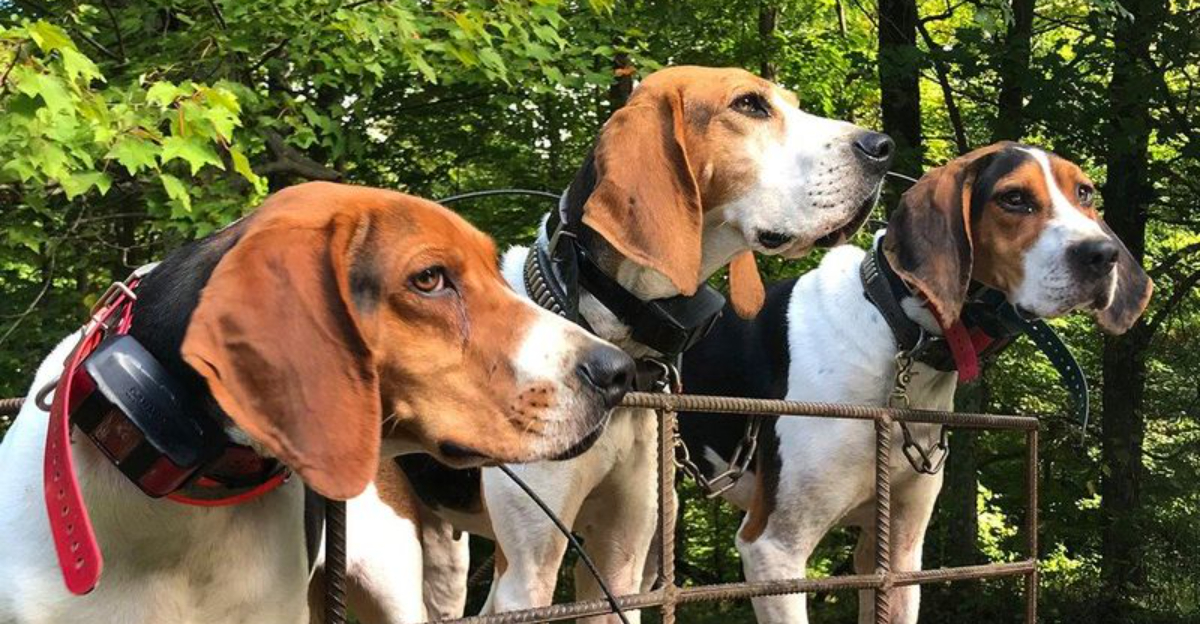Every fall, North Carolina’s woods fill with hunters, hounds, and wildlife on the move.
I’ve lived here for 15 years and seen firsthand how our hunting traditions create unique hazards for our four-legged friends.
Whether you’re a hunter with working dogs or a homeowner with pets near hunting lands, understanding these risks can help keep your canine companions safe during this busy season.
Road Dangers Spike During Peak Deer Movement
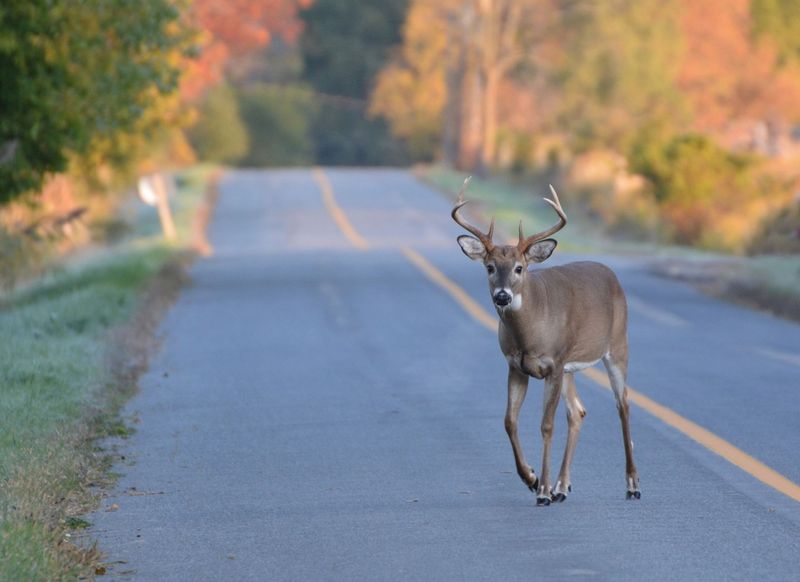
Hunters’ vehicles crowd rural roads while deer dart across highways during their breeding season, creating chaos for any dogs in the area.
I still remember the sick feeling watching a hunting dog dash across Highway 64 last season, narrowly missing an oncoming truck. The combination of more vehicles on back roads and wildlife on the move means dogs face greater risks of being struck.
Working dogs may chase game across roadways without hesitation.
Even leashed pets being walked near hunting areas face increased danger from drivers who may be distracted watching for deer or turning into unfamiliar hunting access points.
Early Season Heat Threatens Working Dogs
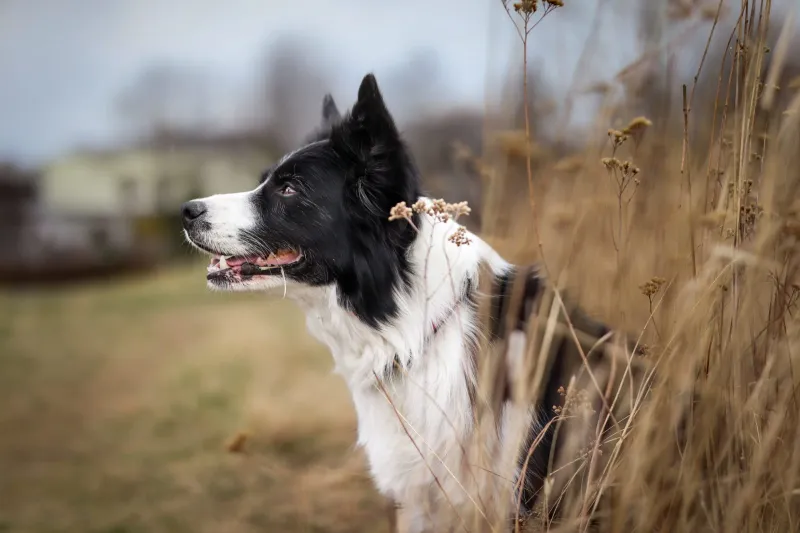
North Carolina’s hunting season often begins while temperatures still reach the 80s.
Working dogs can quickly overheat when pursuing game in these conditions.
Hunting dogs work with incredible drive and determination, often ignoring their own physical limits. The combination of warm weather, physical exertion, and limited access to water creates dangerous conditions.
Dogs with thick coats or brachycephalic breeds (like bulldogs) face even greater risks when accompanying hunters in early season.
Hound-Hunting Creates Canine Traffic Jams
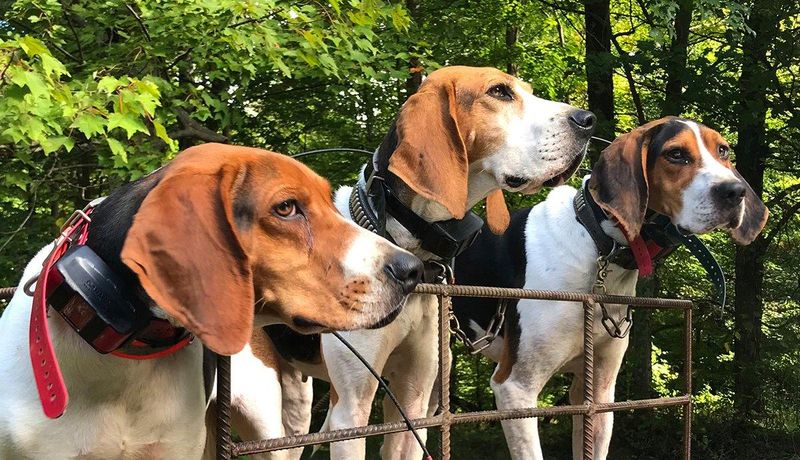
The woods suddenly come alive with barking during deer season! Traditional hound-hunting means dozens of dogs might be working the same area, increasing the likelihood of canine conflicts.
Last November, my neighbor’s retriever encountered a pack of hunting hounds that had strayed from their handlers. The brief standoff ended peacefully, but it highlighted how quickly these encounters can happen.
Dogs unfamiliar with each other may fight, especially when excited during a chase.
Even well-trained hunting dogs can become disoriented or separated from their handlers.
Fall’s Tick Explosion Threatens Canine Health
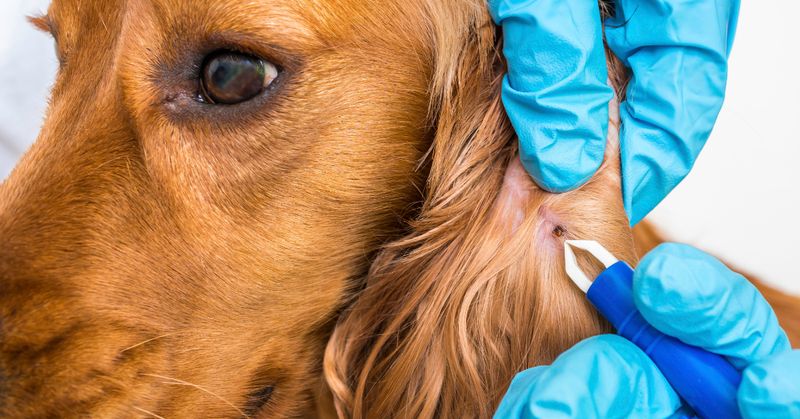
Autumn brings a second wave of tick activity across North Carolina’s hunting lands. These bloodsuckers cling to tall grasses and low brush, exactly where hunting dogs spend their time.
The fall hunting season coincides perfectly with when adult black-legged ticks (which carry Lyme disease) are most active.
Working dogs covering miles of terrain encounter exponentially more ticks than the average pet. Without proper preventatives and thorough post-hunt checks, these parasites can transmit serious diseases like ehrlichiosis, anaplasmosis, and Rocky Mountain spotted fever that may not show symptoms for weeks.
Venomous Snake Encounters During Warm Fall Days
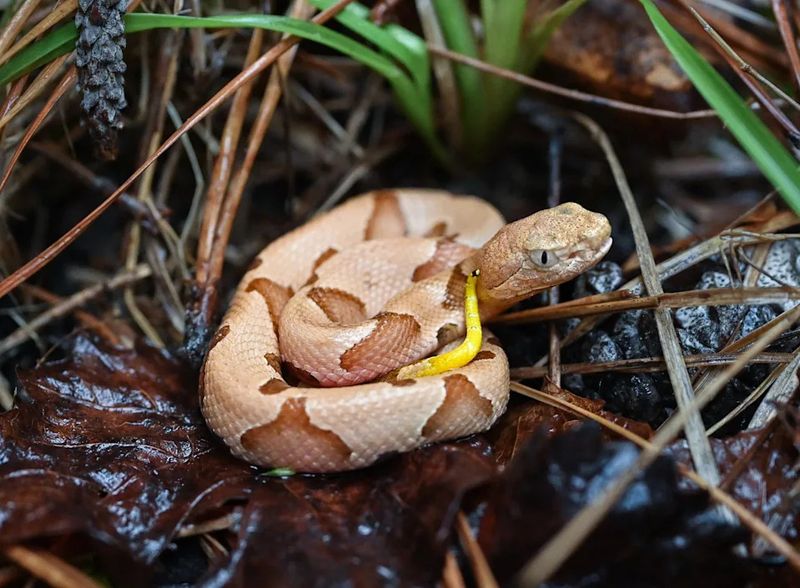
Those gorgeous 70-degree hunting days? They’re perfect for copperheads and timber rattlers too!
Snakes remain active during warm fall periods when dogs are coursing through their territory.
North Carolina’s venomous snakes don’t fully brumate until consistent cold weather arrives, which often happens well after hunting season begins.
Dogs working through leaf litter and brush piles may accidentally disturb resting snakes. Their curious noses and paws often investigate before their eyes spot danger.
The combination of snake activity, reduced visibility in fall undergrowth, and off-leash dogs creates a particularly dangerous scenario in our state’s hunting lands.
Disease Exposure From Wildlife Encounters

During hunting season, dogs face increased risk of encountering sick wildlife disturbed from their normal habitats. Rabies, leptospirosis, and distemper become more significant threats when animals are on the move to escape hunters.
Hunting activity pushes wildlife into new territories, sometimes closer to residential areas where pets roam. Your dog might encounter raccoons, foxes, or other animals carrying dangerous diseases they wouldn’t normally meet.
Veterinarians across North Carolina report spikes in wildlife-related illnesses during hunting months. Maintaining your pet’s vaccinations and limiting unsupervised outdoor time can dramatically reduce these seasonal health risks.
Feral Swine Hazards
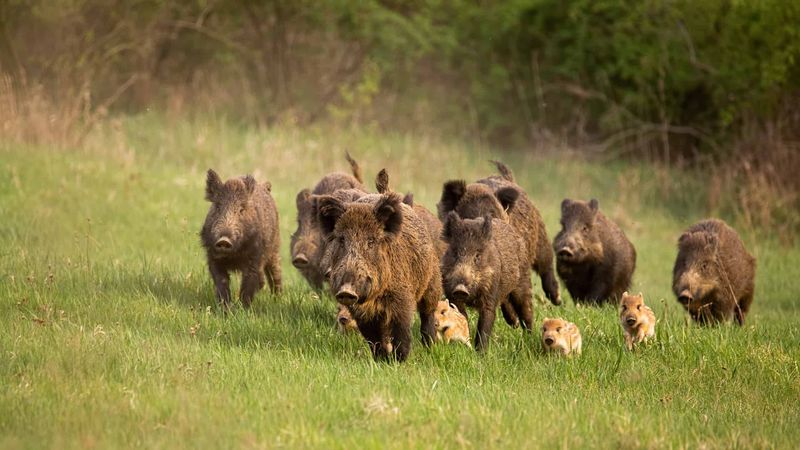
Wild hogs represent one of the most dangerous wildlife encounters for dogs in North Carolina hunting areas. These aggressive animals, weighing up to 300 pounds, will defend themselves fiercely if cornered or threatened, using their sharp tusks as weapons.
Many hunting dogs suffer severe injuries or worse when confronting these unpredictable creatures. The problem intensifies during hunting season when increased human activity disturbs feral hog territories.
Even large, well-trained dogs are no match for adult swine.
Counties like Sampson, Bladen, and Cumberland report particularly high feral hog populations, making these areas especially hazardous during fall and winter hunting months.
Overlap With Trapping Seasons
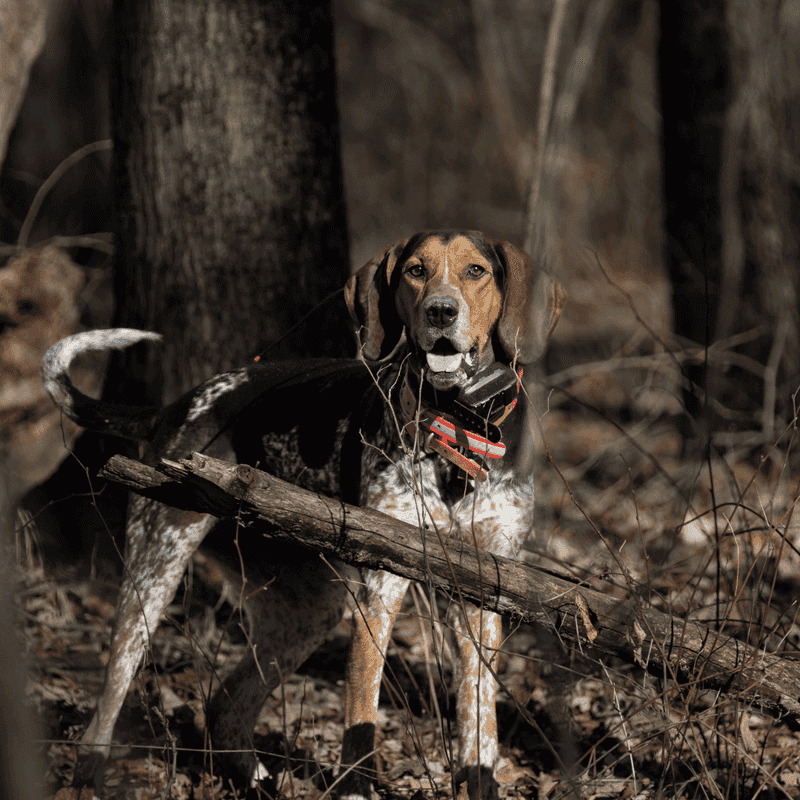
Many pet owners don’t realize that North Carolina’s furbearer trapping season runs concurrently with hunting season. Traps set for foxes, raccoons, and other wildlife create hidden dangers for curious dogs exploring wooded areas.
Foot-hold traps, body-gripping traps, and snares can cause severe injuries requiring emergency veterinary care. While regulations require traps to be checked daily, a dog caught overnight may suffer exposure, dehydration, or predator attacks.
Even when walking on leash, dogs can lunge into underbrush where traps are concealed.
Learning to identify trap locations and recognizing signs of trapping activity can help you choose safer routes for walking your four-legged companion during these high-risk months.
Complex, Patchwork Local Rules Can Escalate Conflicts
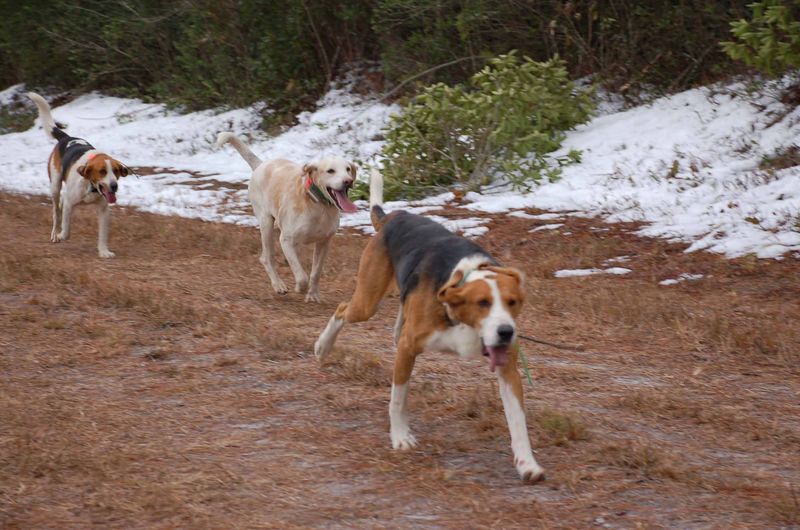
What’s perfectly legal in one area might bring hefty fines in another just miles away.
For example, Orange County has different Sunday hunting restrictions than neighboring Chatham County, creating boundary confusion that puts pets at risk.
Game wardens report frequent disputes between landowners, hunters, and dog owners stemming from misunderstandings about local rules.
Downloading the NC Wildlife Resources Commission’s app provides location-specific regulations that can prevent dangerous misunderstandings during hunting season.
Property-Access/Trespass Constraints

Property boundaries become especially contentious during hunting season in North Carolina. Dogs don’t recognize invisible property lines, creating situations where pets may accidentally enter active hunting zones.
Rural landowners often grant hunting permissions that change seasonally, transforming previously safe dog-walking areas into hunting grounds overnight. Even well-meaning hunters can mistake unleashed pets for game animals in low-light conditions.
The law provides limited protection for dogs that wander onto posted lands. Maintaining strong recall training and using high-visibility gear on your dog reduces these risks.
